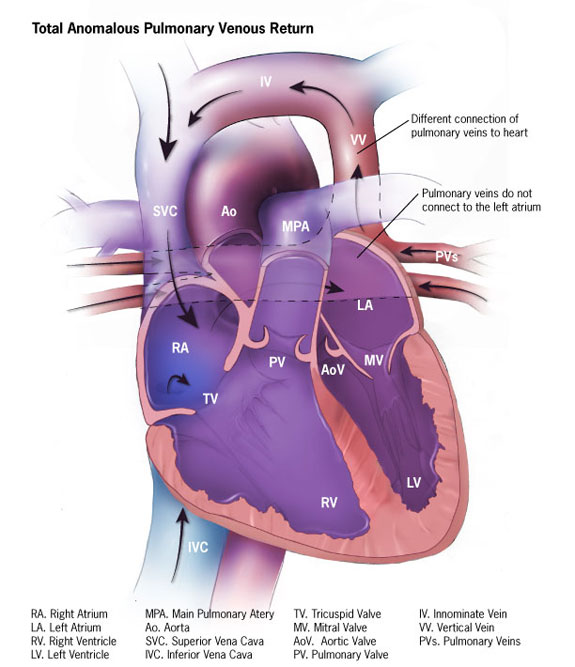Shared Content Block:
Surgery Styles -- "surgery-flex-gallery" class
Anomalous Pulmonary Venous Return
Anomalous pulmonary venous return is a congenital heart defect (present at birth) in which none of the veins that take blood from the lungs to the heart are attached to the left atrium, the left upper chamber of the heart. In normal circulation, blood is sent from the right ventricle to pick up oxygen in the lungs. It then returns through the pulmonary veins to the left side of the heart, which, in turn, sends the blood out through the aorta and around the body.
A person can be born with total anomalous pulmonary venous return (TAPVR), in which no veins connect to the left atrium, or partial (PAPVR) that involves one or more veins being routed incorrectly. In TAPVR, blood simply circles to and from the lungs and never gets out to the body. To compensate, the heart also contains an atrial septal defect (ASD) to allow oxygenated blood to flow into the left side of the heart and on to the rest of the body.
It is necessary to repair this problem surgically as soon as possible. During the procedure, the pulmonary veins are connected to the left atrium and the ASD, if present, is corrected.
For more information on congenital heart defects, please visit the Heart Institute at Children's Hospital Colorado.

Photo courtesy of CDC (Centers for Disease Control and Prevention)
Appointments and Information
This information is provided by the Department of Surgery at the University of Colorado School of Medicine. It is not intended to replace the medical advice of your doctor or healthcare provider. Please consult your healthcare provider for advice about a specific medical condition.